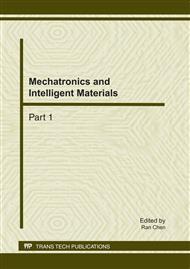[1]
T. Leek, G. Baker, R. Brown, M. Zhivich, and R. Lippmann. Coverage maximization using dynamictaint tracing. Technical Report TR-1112, MIT Lincoln Laboratory, (2007).
Google Scholar
[2]
P. Godefroid. Compositional Dynamic Test Generation. The 34th ACM SIGPLAN-SIGACT Symposium on Principles of Programming Languages, 2007, pp.47-54.
DOI: 10.1145/1190216.1190226
Google Scholar
[3]
C. Cadar, V. Ganesh, P. Pawlowski, D. Dill, and D. Engler. EXE: automatically generating inputs of death. Proceedings of the ACM Conference on Computer and Communications Security, 2006, pp.322-335.
DOI: 10.1145/1180405.1180445
Google Scholar
[4]
R. Majumdar and K. Sen. LATEST: Lazy dynamic test input generation. Technical Report UCB/EECS-2007-36, EECS Department, University of California, Berkeley, (2007).
Google Scholar
[5]
P. Boonstoppel, C. Cadar, and D. R. Engler. Rwset: Attacking path explosion in constraint-based test generation. Tools and Algorithms for the Construction and Analysis of Systems, 2008, P. 351–366.
DOI: 10.1007/978-3-540-78800-3_27
Google Scholar
[6]
C. Pacheco, S. K. Lahiri, M. D. Ernst, and T. Ball. Feedback-directed random test generation. 29th International Conference on Software Engineering, 2007. pp.75-84.
DOI: 10.1109/icse.2007.37
Google Scholar
[7]
Guan Quan-long, Ye Saizhi,Yao Guo-xiang. Research and design of internet public opinion analysis system,IITA International Conference on Services Science, Management and Engineering, 2009, pp.173-177.
DOI: 10.1109/ssme.2009.62
Google Scholar
[8]
Dai HN, Murphy C and Kaiser G. Configuration fuzzing for software vulnerability detection. 5th International Conference on Availability, Reliability, and Security, 2010, pp.525-530.
DOI: 10.1109/ares.2010.22
Google Scholar
[9]
Kim, Hyoungchun; Choi, Younghan; Lee, Dohoon; Lee, Donghoon. Practical security testing using file fuzzing. 10th International Conference on Advanced Communication Technology, - Proceedings, Vol 2(2008), pp.1304-1307.
DOI: 10.1109/icact.2008.4494003
Google Scholar
[10]
Oehlert, Peter. Violating assumptions with fuzzing. IEEE Security and Privacy, v 3, n 2, pp.58-62, March/April (2005).
DOI: 10.1109/msp.2005.55
Google Scholar
[11]
Liu, Qixu, Zhang, Yuqing. TFTP vulnerability finding technique based on fuzzing. Computer Communications, v 31, n 14, pp.3420-3426, September 5, (2008).
DOI: 10.1016/j.comcom.2008.05.041
Google Scholar
[12]
Zhang, Xiao-Song, Shao, Lin, Zheng, Jiong. A novel method of software vulnerability detection based on fuzzing technique. International Conference on Apperceiving Computing and Intelligence Analysis, 2008, pp.270-273.
DOI: 10.1109/icacia.2008.4770021
Google Scholar
[13]
Antunes, João, Neves, Nuno; Correia, Miguel; Verissimo, Paulo; Neves, Rui. Vulnerability discovery with attack injection. IEEE Transactions on Software Engineering, Vol 36(2010), pp.357-370.
DOI: 10.1109/tse.2009.91
Google Scholar
[14]
Neves, Nuno; Antunes, João; Correia, Miguel; Veríssimo, Paulo; Neves, Rui. Using attack injection to discover new vulnerabilities . International Conference on Dependable Systems and Networks, v 2006(2006), pp.457-466.
DOI: 10.1109/dsn.2006.72
Google Scholar
[15]
Yao, Guo-Xiang, Guan, Quan-Long, et al. Research and implementation of next generation network intrusion detection system based on protocol analysis, ISECS International Colloquium on Computing, Communication, Control, and Management, Vol 2(2008).
DOI: 10.1109/cccm.2008.30
Google Scholar


